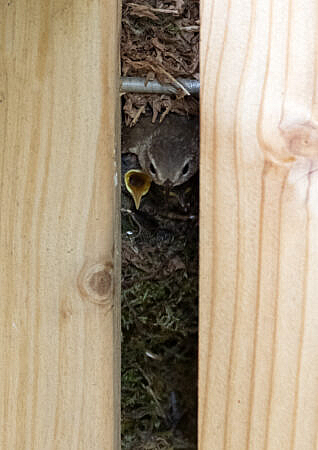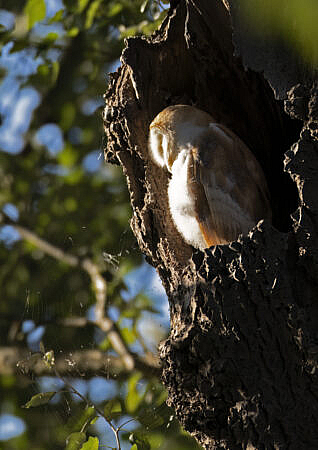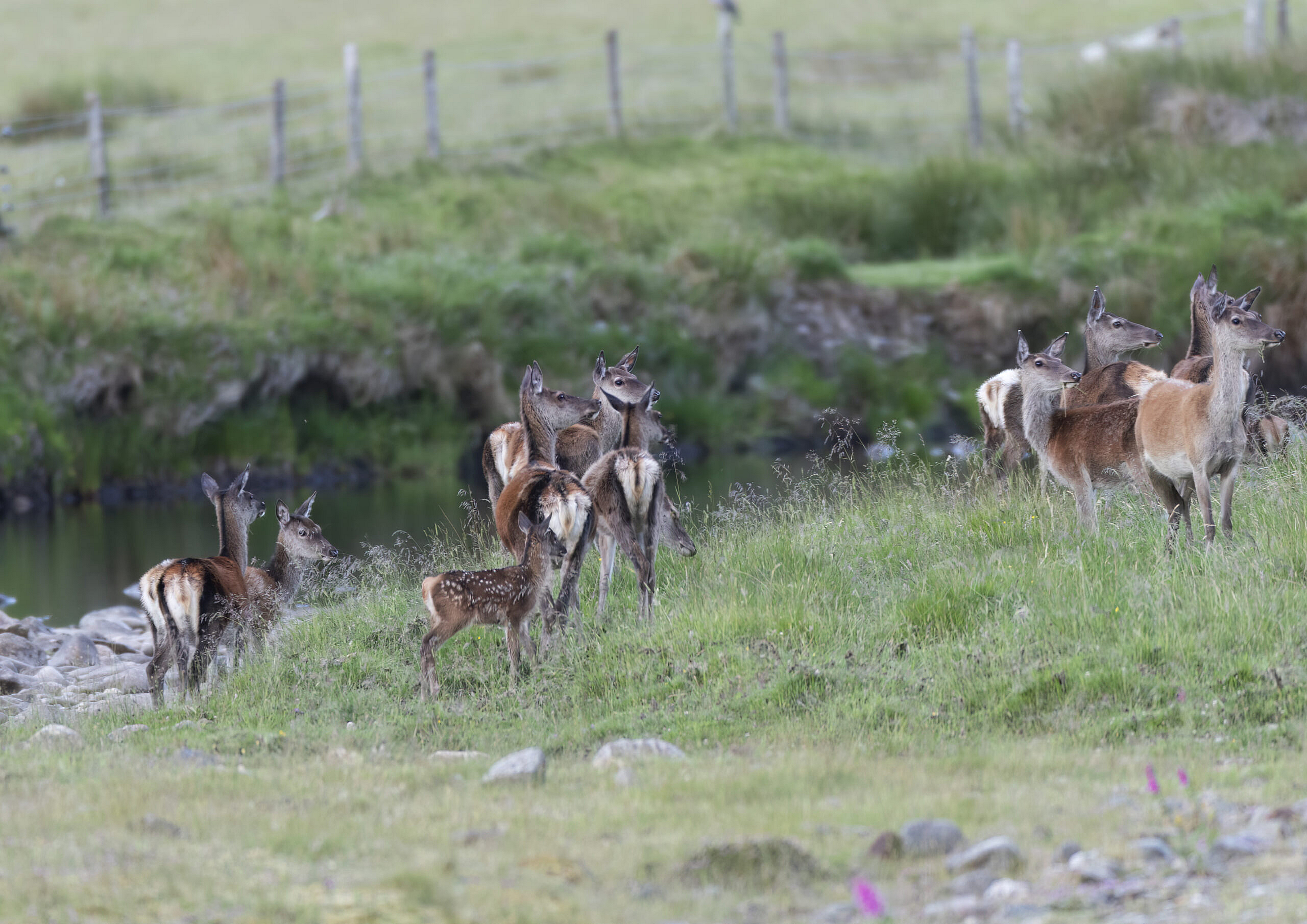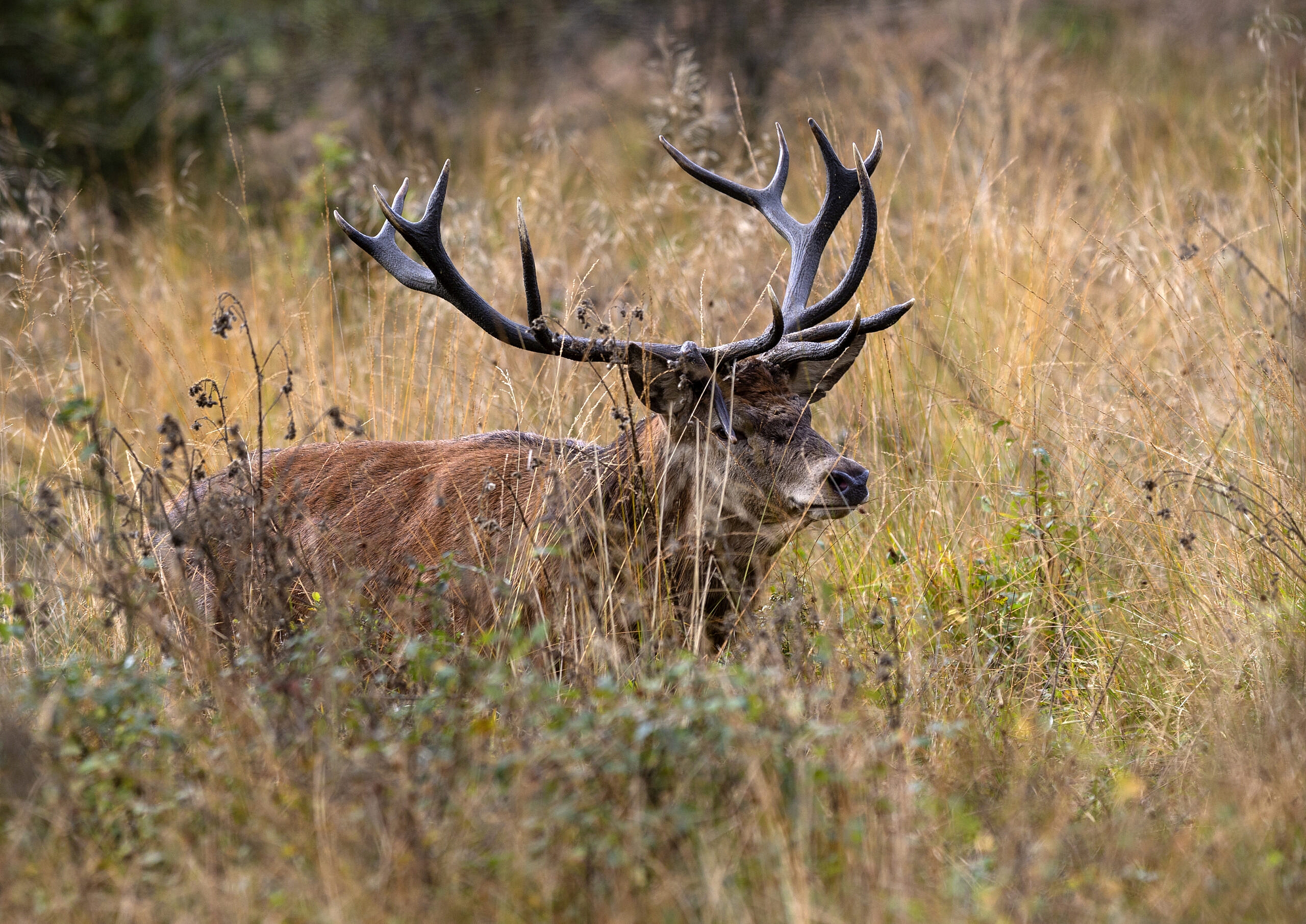You can almost guarantee it. It’s that time of year when someone will post a picture of a birds’ nest in an unlikely place – a watering can in the garden, a tyre in a garage. My personal favourite was a family of buetits who always nested in the top of a local streetlight. Another example is this wren, which had chosen to nest between two upright posts of an open-backed bird hide in RSPB Foulshaw Moss.

Now it’s an offence to disturb a nesting bird, yet in this case the bird seemed to have actively sought out the company of people in this very well-used hide. And as you can see, it successfully raised a brood here. The RSPB hadn’t closed the hide because they didn’t need to: the wren didn’t care one jot that people sat next to its nest.
No matter how often things like this happen, we’re always surprised by them. Yet here’s the thing about wildlife. Every book I have about the natural world (and I have a great many) says something like “This species is found in this kind of habitat. It does that. It eats this”. Obviously the books are much more specific, but the point is that when I have actually found and watched the species concerned, it is almost always somewhere where the books didn’t mention and doing something different to what the bood said it was supposed to.
Why is this surprising? Our wildlife after all, can’t read the books. But the authors of the books aren’t wrong or lazy. It’s just that we forget that our wildlife is as varied, as individual as we are. Not every human eats at McDonald’s or supports Arsenal. My eldest son is an out-and-out townie, living in London and loving it. He wouldn’t dream of living anywhere else. I’m a country mouse, much more at home in fields and woodlands than urban environments. London is the last place I’d live. My son and I are different, but we’re both still the same species. It’s exactly the same for our wildlife.

This young barn owl is standing on the edge of a nest that was right next to a footpath used regularly by people. It was so undisturbed by human presence that it would regularly, as here, fall asleep while I watched it. Although I was further back than the path, using a long lens and under camouflage netting, its superb hearing meant it knew I was there. It had just grown up with people and wasn’t bothered by us.
The human habit of viewing our wildlife as homogenous rather than individual matters, because it drives our policy and behaviours. We believe that all of species X likes habitat Y and so actively reproduce that habitat everywhere that we find that species, in order to preserve it. It’s like forcing everyone to live in Leeds because someone believes that is what all people like. But as the Dutch ecologist Frans Vera, once noted:
“… We’ve become trapped by our own observations. We forget, in a world completely transformed by man, that what we’re looking at is not necessarily the environment wildlife prefer, but the depleted remnants [of habitat] that wildlife is having to cope with”.
I saw this myself with red deer in the highlands. We always picture a red deer high on Scottish moorland, the archetypal ‘Monarch of the Glen’ image. You can certainly find them there. In the Scottish summer they often retreat to the high moors to escape people and the dreaded Scottish midges, but I have seen myself that Highland deer will often spend the nights grazing down in the river valleys, often in towns and villages, before climbing the hills during the day. And in isolated places where few people live – such as here, in the Coignafern Valley in central Scotland – deer can be found at low levels for much of the day. Bones of ancestral red deer have been found in low-lying, marshy areas, and even now red deer on Exmoor descend to the valley bottoms to rut and mate. It turns out that many red deer, if given the choice, prefer to live as a riverside species, not as a mountain one.

What we need to do to support our wildlife is not to carefully create areas of the kind of habitat we think they need, but to create a range of habitats and allow them to choose. And that may mean becoming much more tolerant of those creatures who choose to live alongside us. So let’s take a moment to celebrate those who, despite all the havoc that we’re wreaking on the world, still choose to trust humans and spend time with us. Here’s to the welly-nesters and garden burrowers, the pond-spawners and window-webbers. We’d be a lot worse off without you.



Social Profiles